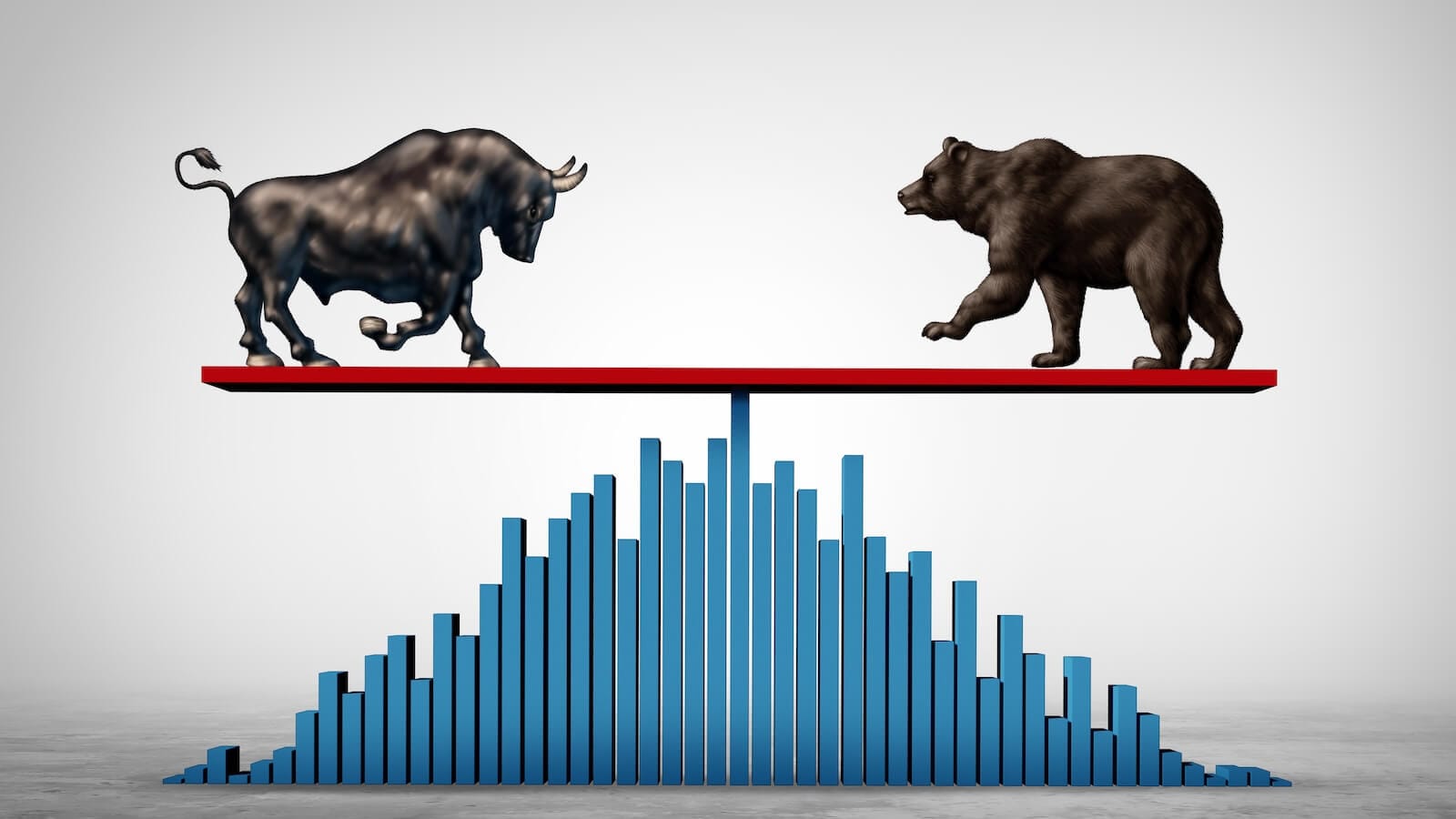Guidelines for 2024 | Focus on Stocks: January 2024
Let's Get This Out of The Way Right Now
For the last 18 years, I've had a love affair with my annual forecast report. Until I began writing this letter, it was the only thing I did. Many of you purchased it last year, and some have asked if it is included in this letter, if there is a special discount, if it will cover many stocks, etc.
Here's the answer. First, as long-term followers know, we have always limited the sales of this report, and it is not a report on individual stocks. You can get it for less if you purchase the report by January 15th. It primarily focuses on forecasting the DJIA and futures for the year with my economic research. This year, I added over 30 individual stock forecasts to the report.
I'm sure most of you will want to buy the report, as it covers all major markets of the world, major futures, and key stocks. It is a 100+ page project. So, it is not like this letter.
As the year unfolds, it is my task to point out, in this letter, up-and-coming opportunities. I will tell you the forecast calls for a bullish 2024. So, if you don't want to buy it to know when the rallies and declines will most likely occur, you know the overall direction. It's up. I project that 2024 will be a bullish year.
The 2024 forecast is now available. Go to: https://www.ireallytrade.com/forecastsfor more details.
General Guideline For 2024
One of the better ways of opening the door to that dark room of the future was written almost 100 years ago. The author, Edgar Lawrence Smith, called his forecast the Decennial Pattern.
What he found was that years in the decade seemed to be consistent. That is to say, looking at years ending in 3, like 1943, 1953, 1963, 1973, 1983, 1993, 2003, and 2013, should give a good idea of how 2023 should pan out.
I have been constructing the decennial pattern for the last 18 annual forecasts. What I have learned is it is pretty good in predicting the overall trend and when to expect tops and bottoms. If you want a "quick and dirty" view of the future; this is it.

Chart 1 is the forecast made last year using the Decennial Pattern. It is just the average of all years ending in 3 from 1943 forward. While Morgan Stanley, Goldman's former CEO Lee Cooperman, and a cave full of other bears called for a declining market, this simple little pattern beat them at their own game.
Just imagine! A formula from the 1930s beat most of Wall Street's top prognosticators. Amazing, yes, but also a real lesson in how markets have a consistent pattern, or beat, to how they transverse time and price.
Here it is for 2024.

Overall, we should expect weakness early in the year and a very strong finish with higher prices at the end of the year than when the year began. As my forecast readers know, there is much more to it than this. But it is a good tool for those who want an overall picture today of what 2024 will look like a year from now.
Now, let's look at the intermediate-term cycle projection for the new year.
Seasonals Will Play a Part as Well
Next, we see the seasonal pattern for the first of the year. Typically, we rally for a few days into the new year. Then we decline, bounce into February, and fall into March.

Turtle Wins Again
I have had so many requests to forecast small- and mid-cap stocks (always saying they top and bottom when the Dow does) that I thought it was time to take a closer look. Perhaps I have been wrong; a frequent affliction in this business.
There has been an industry built around the idea that small- and mid-cap stocks outperform the Dow or S&P 500. Our friends at the Dow Jones eventually created indices to measure these groups, while Vanguard, Fidelity, etc., have ETFs where you can bet your hard-earned cash.
Typically, analysts have written that the Dow Industrials are not the best place to put your money. Books have been written saying it has been a laggard indicator, the turtle in the race for investment profits.

The word on the street has been the Dow Jones is a stodgy group of 30 stocks that doesn't represent the real world. Maybe. Maybe that's the way it used to be. Times have changed. Those 30 stocks now include Apple, Microsoft, Salesforce, Cisco, and Intel, hardly stocks for old-timers.
Charts show the truth of the marketplace; blemishes are revealed, and the truth comes out. Just one look at Chart 4 shows the Dow has been the real leader of the pack, rallying to new highs before mid- or small-caps!
Was that just an anomaly seen in 2020 due to the Pandemic Madness? Perhaps, but remember Newton's first law of motion, "an object set in motion will stay in motion... an object at rest will stay in rest." As I understand it, we can expect the fast to stay fast.

Looking at 2021–2023, we see Newton was on to something. Again, the Dow made new highs while the supposedly better-performing small- and mid-cap stock indices lagged! Those stodgy old stocks declined less and rallied the most. Also, please note that they all rally and decline at the same time... no separate forecasts needed.
It is time to reframe our thinking about the Dow Jones Industrials; the stocks in the index are not what your grandfather invested in.
Wealth Is Not Health
One reason we age, and some age quicker, is that, as cells get damaged, a process called apoptosis clears out the weakened cells. Apoptosis works better when we are young. As we age, the dysfunctional cells are not removed. These cells linger on, harming healthier cells close by. This leads to a weakened immune system, as the cells do not die, but continue to release chemicals that trigger inflation. Think of a basket of fruit where one rotten piece transfers to the others. This senescence weakness has been linked to declines in eyesight, mobility, sagging skin, and thought processing.
Jim Kirkland, M.D., Ph.D., of the Mayo Clinic, and his former colleague Jan van Deursen, Ph.D., were pioneers of the senescence renaissance. For nearly two decades, Kirkland studied ways to remove senescent cells. A clinical geriatrician, Kirkland says he grew tired of prescribing the latest innovations in wheelchairs, walkers, or incontinence control. Instead, he wanted to learn if it was possible to slow down or partially reverse the fundamental aging processes in humans that lead to common health issues as we age.
Van Deursen showed that just getting rid of these cells could increase the lifespan of mice by 25%. But he did it with a trick, using genetically engineered mice in which the senescent cells had a built-in self-destruct switch.
So, to me, the question was how I could best clear out these damaged cells.
Many natural substances have been tested to see which works best. The overall winner was Fisetin, a plant flavanol found in various species. Next best was Luteolin, then Curcumin. Here's the data.

Here's the chart (MEF stands for Mouse Embryonic Fibroblast, the cells cultured in the screening experiment). The lower those red bars, the more effective the substance.
Fisetin is especially interesting because it is cheap, easily available, and widely regarded as safe, but not nearly as well studied as quercetin. They took the winner, fisetin, and subjected it to a series of tests. They began with in vitro (cell culture) tests and proceeded to in vivo tests with live animals, culminating with an impressive lifespan assay in mice.
Luteolin is another flavonoid that has often been used as a dye. It has been shown to be a good anti-inflammatory, as well as useful for hormonal replacement. Some researchers say it might be effective in treating cancer, as it inhibits the proliferation of cells by suppressing cytokines, the primary reason behind the migration and metastasis of cells.
In third place was curcumin, less interesting perhaps only because it has already been extensively studied. Many of you are probably taking it now; it's a turmeric product and has often been used as an anti-inflammatory agent. The curcumin molecule is unrelated to quercetin or fisetin and is not a flavonoid.
As another researcher found, "Senescent cells, which can drive aging phenotypes, accumulate at etiological sites of many age-related chronic diseases. These cells are resistant to apoptosis and can cause local and systemic dysfunction. Decreasing senescent cell abundance using senolytic drugs, agents which selectively target these cells alleviates neurodegenerative diseases in preclinical models."
A cell study published in Aging showed that fisetin eliminated about 70% of senescent cells while causing no harm to healthy, normal human cells.
I also found this, "Of the 10 flavonoids tested, fisetin was the most potent senolytic. Acute or intermittent treatment of progeroid and old mice with fisetin reduced senescence markers in multiple tissues. Fisetin reduced senescence in a subset of cells in murine and human adipose tissue, demonstrating cell-type specificity. Administration of fisetin to wild-type mice late in life restored tissue homeostasis, reduced age-related pathology, and extended median and maximum lifespan" (emphasis added).
A recent animal study has already shown striking results. When old mice—equivalent to 75 years in human age—were given fisetin, they lived an average of 2.5 months longer. That's a 10% increase in living. If that carries over to you, that's about eight more years to trade.
My idea, one I have been following for five years now, is to take all three: Fisetin, Luteolin, and Curcumin. About 200 mg each. Initially, I did a purge, taking them for 20 days. Now, I just do about five to six days of supplementing with these three, same dosage, four times a year. I take these at bedtime. All these supplements are available from typical vitamin sellers. I usually use Swansons, but now they charge for shipping, even on large orders! So, I am searching for a better deal. Some eBay sellers ship for free, as do Amazon sellers.
As always, remember I have no medical training. This is all just one man's experiment in aging. You need to study and make your own decisions... just like in trading.
You Might Not Like Them... But Stocks Love Taxes
It looks like stock prices are driven by tax receipts, even when we go way back to the 1950s.

You can see that relationship in the Chart 7. When receipts are up, so are stocks.
Now, it's not quite that simple. Why? Well, what produces tax revenue for the Treasury? Only two things: higher tax rates or a robust economy. Maybe the stock market drives tax revenue? We have a real chicken and egg question to be answered. I suspect they both feed off each other. Whatever this relationship is, it is incredibly powerful, as seen in the next chart.

It's the same idea as in the last chart, except we have come forward half a century! What do we see? The same thing. Stocks rally when the Treasury takes in more money. Notice the "?" mark on the chart. Tax revenues have been down and, if they go lower, we are in trouble. What I like about this data set is how stable it has been going back to the 1940s.
"Will tax receipts pick up?" is the critical question. I think the answer can come from our study of cycles. That's because they can project out into the future. In Chart 9, I have dropped off the tax data and added its cycle pattern instead.

This is encouraging news, to know and find the dominant cycle for tax receipts. We can now forecast out into the future. This gives us a notion of whether more or less revenue is coming to the Treasury and what that might mean for the stock market. In Chart 9, the cycle is in blue; this is a combination of several cycles to get the general path of the data.

There it is... the cycle forecasting in the future what tax receipts, based on the cycle projection. This is what it should look like for the next eight years.
Cycles can speak; what this one is saying is that we are about to see a pickup of money flowing into the Treasury. As we have seen from the earlier charts, that's bullish. The current data suggests revenue increases into late 2025; by then, trouble may be brewing. But not now.
As I read it, stocks should be very bullish, especially once tax receipts pick up. The data is released at month's end, and you can follow it in this link.
Not Sure About It... This But It May Help Us
Our next chart shows a unique way to forecast stock prices. The blue line is the forecast, not for stocks, but for the CBOE Volatility Index (VIX). The index, as I see it, shows times when investors tend to be very emotional. The index ALWAYS rises when stock prices decline. Yes, when stocks go up, the VIX goes down and vice-versa, or perhaps I should say vix-versa!

What I have done in this chart is to determine the major cycle of the VIX, but then, so we can get an easy visual comparison, I have inverted or flipped the cycle upside down. This way, we can better see the pattern of the index and the Dow Jones in red. As you see, they often dance to the same music, so we will want to focus on the turning points as I have marked off.
Here is my confession: I love the idea behind this, that is, using the cycle of emotions. Yet past efforts to get a good stock forecast have been mixed. Hopefully, this year, I have cracked the code to how these play off one another—lots to learn here.
Thoughts on Stocks for 2024
Most were happy as the bullish tailwinds pushed prices higher as 2023 closed. Not me. Big market rallies, like what we saw, lead to corrections. The more the market rallied, the more fidgety I have become. That's short-term thinking, which I will return to in a moment. My long-term thoughts are that we will remain in a bull market.
That thinking is not a license to just buy anything with the hope the bull market will bail us out. Frankly, I don't think it is even a suggestion to buy good stocks... at least until the time is right. The five stocks I like best for 2024 are as follows:
- ASML, a Dutch company deep into today's AI boom or bubble.
- IBM, a company we all know that's gone from "Selectric" typewriters to in-depth AI research. They were an early leader with Watson.
- Google(Alphabet, Inc) is a ubiquitous company based on massive advertising revenues to AI work. I like this. Like IBM, they have a good cash flow from an income stream unrelated to AI.
- Buffet has a big bet, $15 billion, on Occidental Petroleum. That means there will be support, a floor, for the stock. Also, my personal experience with solar panels and an electric truck convinces me that we are not going to be free of carbon energy sources for a long time.
- Finally, there is Apple. Just because ... it's Apple.
There are many good stocks out there; sorry if yours is not on the list. The trick will be when to enter these on the long side or add to your positions in these stocks.
Two Ways to Help in Timing When to Buy
First, for users of my plug-ins in StockCharts.com, on a weekly chart when our money flow index enters the buy zone, begin to accumulate the stock.

You see the index here applied to COSTCO. It's pretty basic. The best rallies come when my money flow index tells us the funds have been buyers. So maybe we should, too!
My second way to solve this problem is to ferret out the intermediate-term cycles to forecast — in advance — when cycles suggest prices will rally. Then, we just wait for those time zones to focus on entries.
Forecasts For These Five
Accordingly, I am showing the cycle forecast for each of the stocks I listed above. Again, I am using weekly charts to give us an idea of when (time) to look for entries. I have marked off dates of where I expect turns to the upside.




NOTE: If you like these forecasts, you may want to know more about my Forecast 2024 Report. You can read more about it here.

From Long-Term to Short-Term...
Okay, it's time to focus on the very short term. Let's start by looking at my Trading Day of the Month (TDOM) concept. If you need a refresher, please look at past issues. The idea is that some days of each month may present seasonal bias to go long or short.
Our December letter pointed out three such trades. The first was to buy the E-minis (any US stock index or US stock index ETF) on the second trading day of December, and then again on the 16th TDOM of December, and finally the day before the Christmas holiday. In 2023, both were the same trade, as Santa delivered with a strong Christmas rally.
For Gold, we had one TDOM trade to buy on the Opening of December 22nd. That trade also resulted in a profit.
In past Januarys, traders have had poor pickings getting a good long TDOM trade, as we can see from the following tabulation.

As you see, there's not a lot of green until we get to the 20th TDOM of the month with 86% accuracy. We do this using a $3,100 stop (a large one) and exiting on the first profitable opening after two days in the trade. Not much to get excited about.
One look at the true seasonal pattern for the Dow Jones Industrial Average makes the point, as you see in Chart 19.

If there are not a lot of good buy days in January, how about sells? Here is the answer.

The best sell day is on the 9th TDOM, with a 4-day exit as detailed above, and a $3,000 stop. The same trades hold true for other stock indices or stock index ETFs. What you have here is a seasonal bias. I rarely take action explicitly on "the day" — I prefer to focus on the market at that time seeking an entry, pinpointing the trade with our seasonal pattern in StockCharts.com.
Gold in January

Gold most often glitters as the new year begins. Usually, but not always, it starts to move on the 11th TDOM of the month, as seen in Chart 21. Accuracy is only 71%, but the average trade has been over $1,000. ETF traders would use GLD for this trade opportunity.
A glimpse of the seasonal pattern using StockCharts.com gives you a visual appreciation for what usually takes place for Gold in January.

Also note that Bonds(TLT) have been a good buy on the 7th TDOM of January, using a $1,600 stop and 4-day exit. That trade had an 80% accuracy in the last 21 years, netting $17,300 in total profits.
Timing the Market
A clue to the future may come from an analysis of the FAANG stocks, the ones we all know have been the leaders of the pack. I've spent the last few days trying to understand the path these five stocks wander. They have been so volatile that it's hard to pinpoint an exact path. Nonetheless, I came up with the following forecast we should be aware of.


Chart 24 is based on an analysis of swings in terms of length, not time. It also suggests a decline is coming.
1952 all over again?
While I am not a big believer in patterns from the past, I have seen them make good forecasts. The closer to the fit to the past, the better the forecast has been my experience. Using Timing Solutions for this and the other cycle forecasts, I found a very snug fit with the Dow in 1952 (in red Chart 25) versus the price swings seen in 2023. More data here to expect a pullback is coming.

As I see it...
January is a time for profit-taking, not getting caught up in the emotional bullish stampede we are in. This is the time to take chips off the table, not bet more. We have some great profits. Don't let them get away.
And... Coming Next Month
The January Family Gathering webinar will take place on Tuesday, the 16th of January, at 2:00 PM Eastern Standard Time.
Coming in the February letter... we'll have a special focus on Bitcoin and GDP forecast to know what to expect for stocks.
Until then...
Good Luck and Good Trading,
Larry Williams
If you have questions for Larry that you'd like addressed in future postings, please email familygathering@stockcharts.com.










